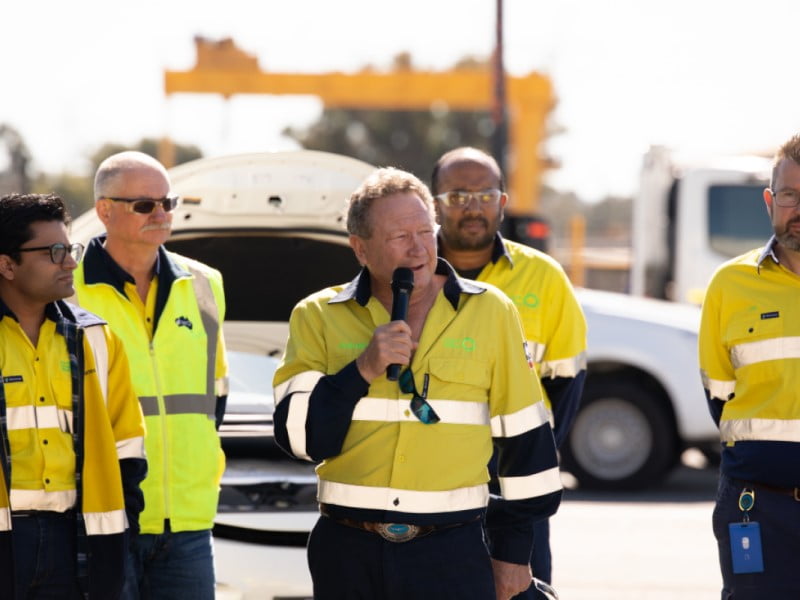Fortescue has announced the development of an electric train that recharges itself using gravity, as the Australian resources giant finalises its acquisition of UK-based Williams Advanced Engineering.
Fortescue is dedicating $50 million, in partnership with Williams Advanced Engineering (WAE), for research and development on the Infinity Train, which fully recharges its battery using gravitational energy when it descends.

Both the project and WAE will be managed by green energy subsidiary Fortescue Future Industries (FFI).
The Infinity Train uses gravity to gain enough power to complete another trip without further charging and without any emissions. The regenerating battery electric iron ore train project is being touted as a world first development.
Last financial year the mining company consumed 82 million litres of diesel running its rail operations alone.
FFI chairman Andrew Forrest said that aside from the environmental benefits to the heavy industry sector, there would be an opportunity to commercialise the technology at a global scale.
“The Infinity Train will not only accelerate Fortescue’s race to reach net zero emissions by 2030, but also lower our operating costs, create maintenance efficiencies and productivity opportunities,” Mr Forrest said.
“The Infinity Train will join Fortescue’s green fleet under development and will contribute to Fortescue becoming a major player in the growing global market for green industrial transport equipment, providing great value for our shareholders.
“The commercial opportunities are obvious for FFI as it pioneers this technology, captures its value and distributes it globally. Less obvious, is that we have an opportunity to not only lower our operating costs, eliminate the cost of diesel from our company but of course eliminate our rail system carbon emissions.”
Fortescue chief executive officer Elizabeth Gaines was equally impressed by the technology being developed for the Infinity Train.
“The Infinity Train has the capacity to be the world’s most efficient battery electric locomotive. The regeneration of electricity on the downhill loaded sections will remove the need for the installation of renewable energy generation and recharging infrastructure, making it a capital efficient solution for eliminating diesel and emissions from our rail operations,” Ms Gaines said.
There are 54 operating locomotives and 16 train sets in the mining conglomerate’s rail fleet. Per train set, 34,404 tonnes of iron ore can be hauled in 244 ore cars.
Fortescue purchased WAE at the final price of more than $300 million (£164 million), an investment that will help Fortescue reach its net zero target for scope one and two emissions by 2030.
The deal with the Williams Formula 1 team offshoot was announced in January but an announcement today confirmed WAE will “remain a strongly independent company”. The business specialises in high performance battery systems and electrification.
WAE chief executive officer Craig Wilson said he was looking forward to working with Fortescue and FFI.
“High performance battery and electrification systems are at the core of what we do and now that we are part of the Fortescue family, this presents an exciting opportunity to develop new technologies as we work together to tackle climate change,” Mr Wilson said.
Last month, both Rio Tinto and BHP announced the purchase of battery powered locomotives equipped with battery recharging brake systems. However, this is insufficient to fully recharge the batteries and must be supplemented with traditional charging.
Do you know more? Contact James Riley via Email.

